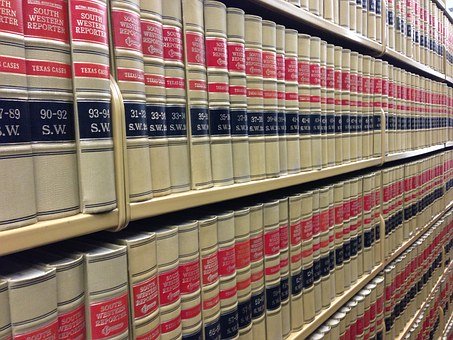Below is a review of the posts (on Facebook, LinkedIn, and Twitter) from the past week. You can check out the full posts by clicking on the links.

In the post on Sunday 6/14/20, we learned that one size doesn’t fit all: new EEOC Guidance cautions employers to take an individualized approach in returning at-risk employees to work in the wake of COVID-19. The Guidance was issued on May 5 and 7 in advance of many states permitting people to return to work. A link to the FAQ list is in the post. The Guidance is not all-inclusive, but rather goes to an employers obligations if an employee who is to return to work has a disability that may pose a threat to his or her health or is otherwise at risk in the post-COVID workplace. So, what does that mean for employers who must have in place return-to-work protocols for the safety of all employees? It means that they may need to make reasonable accommodations for the at-risk employee using the interactive process called for by the ADA or Title VII based on a disability or religious beliefs. The post notes examples relative to the use of PPE and how they might be accommodated. The post also deals with whether an employer can take action to “protect” at-risk employees who are returning to work but request no accommodation. Some examples of accommodations for at-risk employees are listed in the post.
TAKEAWAY: There is no one-size-fits-all answer to accommodation in the age of COVID; each individual case must be looked at on its facts and the workplace.

The post on Monday 6/15/20 noted that as offices reopen, employers must beware: terminating an employee with COVID-19 may violate several federal statutes. This issue has been ongoing since the beginning of the pandemic but is perhaps more acute now that business have or are reopening and employees returning to the workplace. Employers that are considering terminating an employee because they have contracted COVID-19 should first think of the potential liability under the FFCRA, FMLA and ADA (the new trilogy of acronyms). The FFCRA applies to employers with fewer than 5000 employees, includes EPSL and EFMLA, and has the protections noted in the post. The FMLA may also apply, even to employers with more than 500 employees, if the one prerequisite noted in the post applies. The final acronym is ADA, another statute that may apply. The employee’s illness would need to be a disability as defined under the ADA and noted in the post.
TAKEAWAY: If an employee has contracted COVID-19, don’t terminate employment unless and until you talk to an employment lawyer to ensure it is the legal way to proceed.

The post on Tuesday 6/16/20 asked: If COVID-19 closed your pool or gym, can you skip paying HOA or condo fees? This is not like a regular gym or pool that is open to the public that is closed due to COVID. This is something that owners in the planned community pay for as part of the dues/assessments. So, do the assessments need to be paid when the common amenities are not available for use? Simply, YES. Associations may take or allow other measures as noted in the post, but assessments are different. How so? See the post. It talks about how associations work, their budgets, and what happens even during the pandemic. In fact, assessments might increase during the pandemic because costs to the association have or will increase, such as more supplies (those listed in the post) and more cleaning. If owners cannot pay their assessments (as opposed to not wanting to), they should contact the Board or management agent as early as possible so that a payment plan or other arrangement can be put in place and the Board can make changes to its budgeted projections.
TAKEAWAY: Owners in a planned community are required to pay assessments and a pandemic doesn’t excuse the obligation; however, there can be flexibility so discuss the situation with an attorney familiar with community association law.

The post on Wednesday 6/17/20 taught us that a talent manager’s knowledge of a disability did not establish discrimination. Huh? Darlene, an older employee with asthma, worked as an admin assistant. The company for which she worked was acquired by another company. Her position was eliminated and the new company did not transfer her or rehire her. She sued on the bases of age and disability (and also under the FMLA on the basis noted in the post). She buttressed her allegations with the facts noted in the post. The company claimed it was performance related. As to the fact that was the crux of Darlene’s case (see the post), the court found it not to support her allegations (again, see the post).
TAKEAWAY: We are back to document, document, document – the issue, the employee’s (lack of) action, and the discipline or other action by the employer as a result.

The post on Thursday 6/18/20 did not exist – this author was so busy with preparing and filing one of several big briefs and pleadings due this week that she did not feel it wise to stop for a post.
TAKEAWAY: It is important to learn about the law and how it is interpreted; it is also important to complete what you are asked (and paid) to do.

The post on Friday 6/19/20 was the same as Thursday – nonexistent. And for the same reason.
TAKEAWAY: yep, even if it keeps you fully occupied for 2 days in a row, fulfill your obligations, and do what you need to do.

Finally, in the post yesterday 6/20/20, we learned that hamster tests show mask reduce coronavirus spread. (We also asked that you wear a mask in public.) Of course, you can read conflicting accounts of everything COVID-related on the internet. But when it comes to safety and precaution, this author tends to err on the side of conservatism (and the possibility of lessening illness and harm or even death). Here we learned of research occurring in Hong Kong and how the researchers devised an experiment to see if masks actually help prevent the spread of COVID. How they set up the experiment is noted in the post. And the result: a more than 60% reduction in non-contact transmission when masks were used. Further, for those who still got infected (the other 40%), they had less of the virus in their bodies. The results in the post also looked at the difference when surgical versus non-surgical masks were used. And the cherry on this sundae is who the lead researcher is and his place in science – see the post.
TAKEAWAY: Wear a mask in public. It helps to protect others and it might even help to protect you yourself. Just do it.

 York, Pennsylvania 17403
York, Pennsylvania 17403